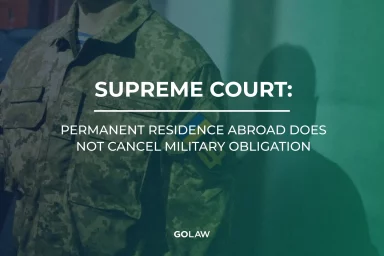When the bankrupt’s management is liable to creditors with its own property?
Tags
Contents
In the business environment, both potential debtors and creditors see insolvency as a tool to avoid liability under debts. This is a result of long-term and extremely inefficient operational activity of the debtor. Insolvency law aims at restoring the solvency of a debtor or at least fully satisfy the claims of its creditors. The bankruptcy procedure provides special mechanisms for this purpose, even in the event of insufficiency of the debtor’s property to repay the debt.
As a general rule, claims of the bankrupt’s creditors are satisfied at the expense of the liquidation estate of the bankrupt, which, in turn, includes all the assets of the debtor.
However, as it is known, the bankrupt’s property is usually insufficient to discharge all its property obligations. Moreover, it is no secret that such an “empty” estate is deliberately formed by stakeholders in advance. Thus, creditors typically seek mechanisms to satisfy their claims at the expense of those whom they find guilty of “significant deterioration of the debtor’s property status” — its owners and management. Furthermore, unlike the debtor, such individuals are often able to perform their obligations to creditors as they have sufficient assets.
Reasons for pecuniary liability of management
The actual grounds for the emergence of liability of persons associated with the bankrupt include the concealment of bankruptcy, fraudulent bankruptcy, intentional bankruptcy or illegal actions to dispose of the property.
Persons committing such violations are participants of the bankrupt, its head or other persons who have the right to give instructions to the debtor or otherwise determine its actions.
Therefore, the analyzed issue should be of interest not only to creditors but also to bona fide managers of enterprises facing the threat of insolvency. The law imposes special obligations on them related to such condition, and in some cases — pecuniary liability under the obligations of the enterprise.
Moreover, joint and subsidiary liability of the debtor’s head is stipulated in different cases. There is the following difference between them: in the case of applying joint liability, the claim may be filed both to the debtor and to its head, both jointly and separately from each other, at the choice of the creditor. Instead, subsidiary liability may be imposed on a manager (or other related parties) only in the case of definitive insufficiency of the property of the debtor itself.
What are the management’s first steps in case of threat of insolvency?
According to the legislation, the head of the debtor must notify its participants of detecting the signs of insolvency. Failure to do so will result in joint liability under the outstanding obligations.
The term of such notification is not specified, yet the law sets a one-month period for the debtor to apply to the court in case of threat of insolvency. According to the legislator, this term means the condition in which the satisfaction of claims of one creditor will lead to the inability to perform obligations to others.
However, the head has no right to apply to the court without a relevant decision of the supreme management body, as it is required to attach a relevant decision of the general meeting to the application.
On the example of a limited liability company, the executive body must convene a general meeting if the company’s net asset value decreased by more than 50% compared to the end of the previous year. The law provides that members of the executive body shall be jointly and subsidiarily liable under the obligations of the company in case of failure to perform this obligation. However, participants of the executive body shall be released from liability should they prove that they were not aware and were not to be aware of such a reduction or if they voted in favour of the decision to convene a general meeting on the relevant issue.
It should be noted that the company’s officers guilty of misleading the participants regarding its financial situation, which resulted in unlawful payments, shall be jointly liable along with the participants under the obligation on refunding such payments.
Who will be liable if the debtor’s property is insufficient?
It is envisaged that the imposition of subsidiary liability on the head of the bankrupt (or its participants) shall be initiated by the liquidator in case of establishing that bankruptcy was due to the fault of related parties. According to established case-law, this does not require a conviction in criminal proceedings.
However, the Bankruptcy Procedure Code provides for no actual circumstances or indicators that would serve as mandatory grounds for the liquidator to file a relevant application. Therefore, whether or not there is bankruptcy caused due to the fault of related parties shall be decided on a case-by-case basis given the specific circumstances. This, in turn, creates a wide field for abuse, primarily in the form of a liquidator’s act of omission that is often unwilling to satisfy creditors’ claims at the expense of persons guilty of bankruptcy, even with obvious economic and legal grounds.
According to the current case law of the Supreme Court, signs of insolvency due to the fault of related parties may include: failure to report for tax arrears, concealment of assets, lack of funds on the debtor’s accounts, failure to comply with the requirements of the articles of association in case of reduction of debtor’s assets.
It should be noted that in both cases, the imposition of pecuniary liability on a head is the right and not the duty of creditors and liquidator, respectively. However, in the latter case, refusal of the insolvency receiver to recover the debt from related parties should there be grounds for it may be qualified as the improper performance of its duties.
Conclusion
All participants in the bankruptcy procedure (including potential ones) should be careful at performing their duties and should not rely on the low efficiency of the procedure. The legislation provides specific mechanisms of liability (pecuniary, administrative and criminal), and law enforcement practice is slowly but surely moving towards the priority of creditors’ rights. Management must pay special attention to the financial condition and property status of a company since it is the management who acts on behalf of the debtor and is the most informed, as well as bears the highest risk of being held liable.
Related insights

18 December 2025 Publication
Supreme Court: Permanent Residence Abroad Does Not Cancel Military Obligation

16 December 2025 Publication
The Cabinet of Ministers approved a draft law on the implementation of EU legisl...

12 December 2025 Publication
Seizure of assets in foreign banks: legal ways to protect your interests
Sign up to be aware
New achievements are inspired by information. GO further, don’t miss out GOLAW news and legal alerts
Our expertise
-
- Energy and Natural Resources
- Antitrust and Competition
- Banking and Finance
- Compliance, Corporate Governance and Risk Management
- Corporate and M&A
- Criminal and White Collar Defence
- Defense in Anti-corruption procedures and regulations
- Labor and Employment
- Natural Resources and Environment
- Government Relations (GR)
- Insolvency and Corporate Recovery
- Intellectual property
- International trade
- Legal support of business and private Сlients in Germany
- Litigation and dispute resolution
- Private clients
- Real Estate and Construction
- Restructuring, Claims and Recoveries
- Martial Law
- Tax and Customs
-
- Agribusiness
- Aviation
- Chemical industry
- Engineering, Construction and Building Materials
- Environment and Natural Resources
- Financial institutions
- IT and AI
- Industry and manufacturing
- Healthcare industries, Life sciences and Pharmaceuticals
- Media, Entertainment, Sports and Gambling
- Retail, FMCG and E-Commerce
- Transport and Logistics
We use cookies to improve performance of our website and your user experience.
Cookies policy
Cookies settings





